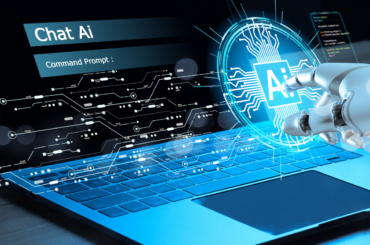The digital economy is changing how we do business at a fundamental level, with or without a pandemic. While COVID-19 may have accelerated the speed in which businesses need to become more technologically enabled, the digital transformation was already happening.
This transformation impacts business at every level, including business workflows, internal compliance processes, and software demands. As organizations move into the digital economy, enterprise cloud applications are helping businesses move into the digital world.
The worldwide enterprise resource management (ERM) applications market saw strong growth in 2019. The ERM market, as defined by IDC, includes the following eight functional markets: enterprise asset management, financial applications, financial performance and strategy management applications, human capital management applications, order management, payroll accounting, procurement, and project and portfolio management. The market for ERM applications is driven by digital transformation activities globally. Demand for cloud-based ERM applications continues to be strong, as evidenced by the ERM growth rate of 8.1%. This digital enterprise uses modern software and its properties of automation, connectivity, and visibility to drive competitive advantage.
Organizations need to understand that true digital innovation requires the right vendor and platforms to help them evolve digitally. As a result, the digital enterprise has different expectations for its software and, more importantly, its software vendors. This change can be seen starkly in the way digital enterprises buy software. Few of the key characteristics of the new digital enterprise buyer are:
- Decision featuring more voices. As many as 20 IT and line-of-business employees may be involved in the decision-making process. Vendors must create a coordinated marketing campaign with layered messaging to appeal to both IT and line-of-business needs.
- Line of business having greater influence. The line-of-business user exerts greater influence within the buying process. Vendors must discuss how their solution addresses business goals.
- CIO prioritizing innovation. The role of the CIO is considered a key driver of innovation. Vendors must discuss how their product’s technology road map aligns with the CIO mandate to drive digital innovation and how it fits it into the overall IT portfolio.
- Millennial workers becoming buyers. Millennials represent a rapidly growing percentage of an organizations and are partial to consumer like experiences in their software and use of mobile technologies. Vendors must invest in modernizing their user interfaces (UIs) and enhancing their mobile functionality.
Organizations are digitizing their business to stay competitive. The rapidly increasing pace of global business, the expanding volume of business data, the impact of digital transformation, and innovation of the 3rd Platform and innovation accelerators have added more to the ERM market. Artificial intelligence (AI), machine learning and advanced analytics coupled with curated data sets are advancing cloud technology to become intelligent applications. Vendors creating these intelligent applications enable better business outcomes with more intelligent workflows that automate transactional workflows and augment human work with more insights.
To attract the new digital enterprise buyer, vendors will need to:
- Invest in microservices: Microservices provide the ability to create highly maintainable services that can combine to form large applications dynamically. This provides vendors with the necessary flexibility/agility to meet the demands of a highly dynamic market landscape.
- Provide cloud-based ERM applications: Cloud computing and cloud-based ERM applications are currently projected to account for more than 65% of the market in 2024. Vendors must build out the functionality of their cloud products to benefit from the wave of cloud adoption.
- Provide better data visualization: Operational employees often must sift through a tremendous amount of data to find key insights. The demand from end users to have better data visualization tools is growing and vendors must now provide the answers.
- Ensure highly flexible reporting and analytics: Many organizations have limited reporting and analytics functionality. Vendors must bring in AI and predictive analytics capabilities that save time by modeling data to reveal value-added insights that make reporting and performance monitoring and selecting the right outcomes easier.
- Create intelligent workflows: Vendors must work to embed intelligence within the business workflows to unleash the full power of artificial intelligence. This will guide decision making and automate lower-level tasking within the applications.
- Prioritize user experience: The processes within the business must be done in a uniform way, so the real battleground becomes the user experience achieved with the vendor’s software.
- Place more emphasis on the ecosystem: Business processes are best when fully integrated. Vendors must be aggressive in building out their partner ecosystem to include other related enterprise applications.
- Recognize SMB is on the rise: Small and medium-sized business segment is growing, and almost exclusively choosing public cloud offerings. Vendors are advised to acquire one of the many public cloud ERM application providers that have emerged, augmenting their own capabilities while focused on increasing their market share overall.
Digital transformation initiatives are now part of two-thirds of G2000 CEOs’ corporate strategy. Currently, only a few vendors offer cloud platforms with digital innovation aspects of low code/no code opportunities to help digitize their workflows. The more workflows an organization can digitize with your products or your partners, including low code/no code, the more an organization will stay with you for the long haul. As the blend of vision, strategy, business processes, data, analytics, innovation, and cloud comes together, the digital world will have real impact for all organizations.
Digitally enhancing your business through enterprise cloud applications brings long-term customer engagements in the Future of Digital Innovation while also increasing market share.
If you would like to learn more about the Future of Digital Innovation or IDC’s other “Future of X” practices, visit our website at https://www.idc.com/FoX




